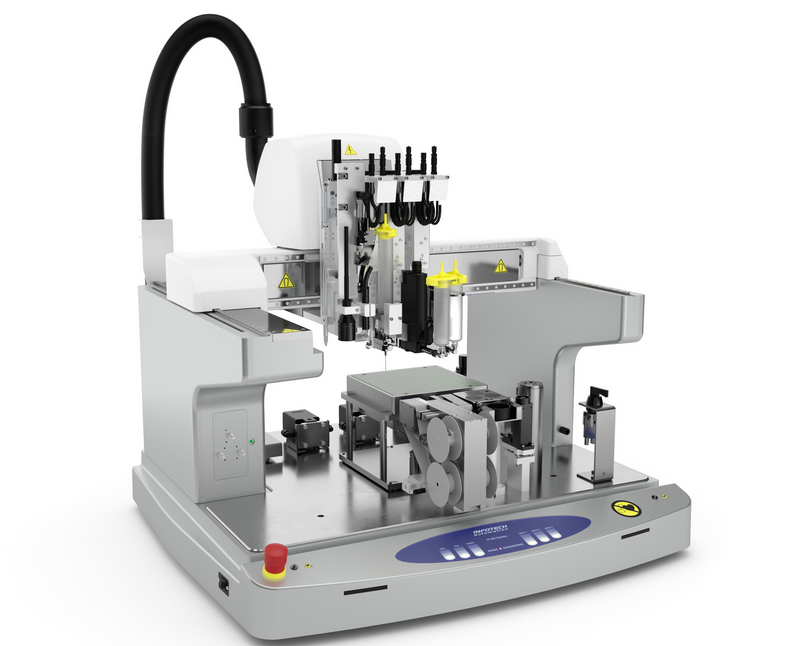Dec 17 2020
Infotech has introduced a novel, fully automated system designed specifically for printing liquid materials and multi-material structures. Thanks to the parallel operation of several dispensing heads, different materials can be processed in one printing step. Complemented by DELO's high-performance epoxy resins, this enables the production of components with different physical property ranges.
 The system has several dispensing heads that can be equipped with different valves. This allows different materials to be used in one printing step, making it possible to produce functional components. Image Credit: Infotech
The system has several dispensing heads that can be equipped with different valves. This allows different materials to be used in one printing step, making it possible to produce functional components. Image Credit: Infotech
The core of the new system is a special dispensing unit that can be equipped with up to three different dispensing valves. Depending on the properties of the pressure media and the structures to be dispensed, users can choose from a variety of established dispensing valves, such as jet valves, time-pressure valves, or screw dispensing systems. Each valve sits on a separate vertical axis.
Since the dispensing heads can be operated in parallel, it is possible to combine different liquid materials in one printing process. Linear axes and integrated real-time control ensure maximum dispensing precision. The segmentation of the structure and the segments' allocation to the different dispensing valves are stored in the STL model and correctly implemented in the dispensing pattern by the slicer software. A camera moving along with the robot head detects the exact dispensing position and at the same time is used to calibrate the dispensing system.
Reliable printing of functional structures
For the production of multi-material designs, it is not only the system's precision that is crucial, but also the materials used. During the printing process on the Infotech system, the materials are applied in liquid form and then cure under UV light. The effective thickness of the applied layer is determined by a non-contact height measurement. This allows the working distances of the dispensing units to be dynamically corrected if necessary. For curing, the UV lamp head mounted in the system travels along the contour dispensed last. The material thus immediately reaches its final strength.
The distinctive feature of DELO's liquid materials is their suitability for combination and their functional character. Having similar chemical properties, the printing materials build up very good adhesion to each other and show isotropic properties in all printing directions when cured. In addition, they provide functions such as transparency, conductivity, or flexibility.
The DELO materials can be used to reliably print components serving different functions – for example, components with fixed and flexible areas or with transparent and black areas. Structures with wall thicknesses of less than 500 µm can be produced just as easily as complex structures with overhangs or undercuts.
Fully automatic system for integration into existing production lines
The entire dispensing and curing process is fully automatic, as is the cleaning of dispensing needles or flat nozzles. Cleaning can be carried out as required, either after a certain number of cycles or components or after a defined period of time.
The new system, which was developed based on the proven IP-500 Desktop Dispenser, can be used as a standalone system. The identical machine configuration can be easily adapted to in-line dispensing cells. In the flexible, modular system, DELO devices such as jet valves and LED curing lamps can also be used.
The system is particularly suitable for prototype development and small-series production. Typical areas of application for such components printed with DELO materials include the automotive and microelectronics industries, as the materials are highly resistant to temperature and media and have properties similar to those of high-performance plastics.